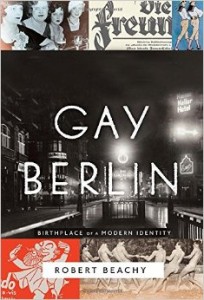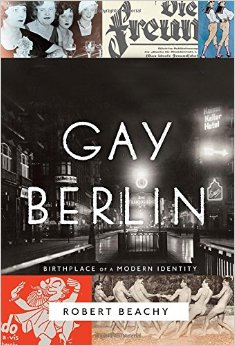 Gay Berlin: Birthplace of a Modern Identity
Gay Berlin: Birthplace of a Modern Identity
by Robert Beachy
Knopf. 336 pages, $27.95
THE GERMANS “are not satisfied simply being pederasts, like the rest of the world,” sighed French writer Octave Mirbeau in “Berlin-Sodome,” his 1907 travelogue. “They have to invent homosexuality.” Robert Beachy’s comprehensive history of gay Berlin from the 1870s to the 1930s shows that the emergence of gay and lesbian cultures in the modern West owed much to what Mirbeau identified as Berlin’s pederasty and invention—its practice and theory—and Beachy makes a compelling case for the “German invention of homosexuality.”
This is a book of startling firsts: the first openly gay man, the first legislative debate over sodomy law repeal, the first gay rights organization.
In a city of strangers, gay men and lesbians (about whom Beachy writes very little) lived just slightly out of view, gathering in bars and tea shops, meeting in organizations, publishing in a press far freer than elsewhere in Europe or North America, and engaging in lively debates with a medical and scientific community that was fascinated by sexual variation. The Berlin police turned a surprisingly blind eye or even, through its Department of Homosexuals and Blackmailers, actively protected the sexual respectability of middle-class men. Official indifference became more difficult after 1907, when the Eulenberg scandal revealed a ring of influential homosexuals surrounding Kaiser Wilhelm II, and the smallish world of political pamphlets, medical dictionaries, and bars tumbled into the spotlight, forcing Germans to face the homosexual question directly.
Germans also had to confront Magnus Hirschfeld—rather obviously the hero of Beachy’s book—whose Scientific-Humanitarian Committee (SHC), established in 1897 with the motto “through science to justice,” was the first gay rights organization in the world. While Hirschfeld was sexual equality’s most articulate advocate, he was not without critics. Beachy smartly traces these divisions, especially between members of the SHC, who cast their lot with scientific research, legal reform, and alliances with left political parties and feminists, and proponents of an alternate, more rightist vision. Most notable was Adolf Brand, who in 1896 began publishing Der Eigene, the first gay magazine. Most memorable is the story of Hans Blüher, whose Männerbund organization concocted a heady brew of nudism, anti-Semitism, and nostalgia for the homosocial Kameradschaft of World War I—dangerously appealing to the Nazis until, in July 1934, Ernst Röhm and a handful of other gay Nazis lost their heads in the Night of the Long Knives. Hirschfeld, who spent the last years of his life in exile in Paris, fared little better: the library at his Institute for Sexual Science, raided in May 1933, ended up kindling a massive book-burning at the city’s Opernplatz three days later.
There’s very little in Gay Berlin that is truly new; but if the overall arc is familiar, Beachy writes clearly and with a seriousness that links his newest finds from police reports and organizational records with familiar stories and characters. Even W. H. Auden and Christopher Isherwood (you knew they would show up at some point, didn’t you?) appear here in a new context, just two ordinary participants in Berlin’s interwar sex tourism industry.
Gay Berlin left a legacy outside Europe, in exile communities: in Chicago in 1924 through the brave and solitary efforts of Hirschfeld disciple Henry Gerber to establish the Society for Human Rights; and in southern California after World War II. A postwar struggle of endurance and revival rebuilt West Berlin which functioned as a Cold War gay mecca. Since 2000 the re-united city has made a new claim to the status of global gay capital that it held a century ago. A sense of doom pervades every page of Beachy’s book, which ends with the Nazi rise to power, but if there’s a volume two, the gloom will lift.
_____________________________________________________
Christopher Capozzola is an associate professor of history at MIT.






